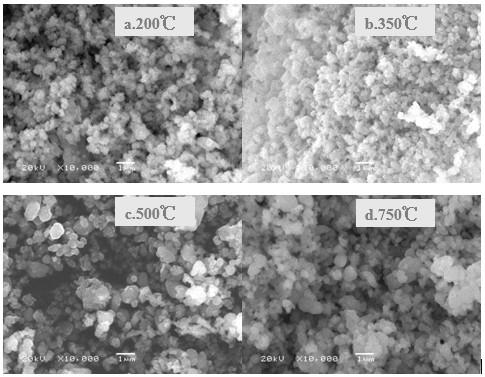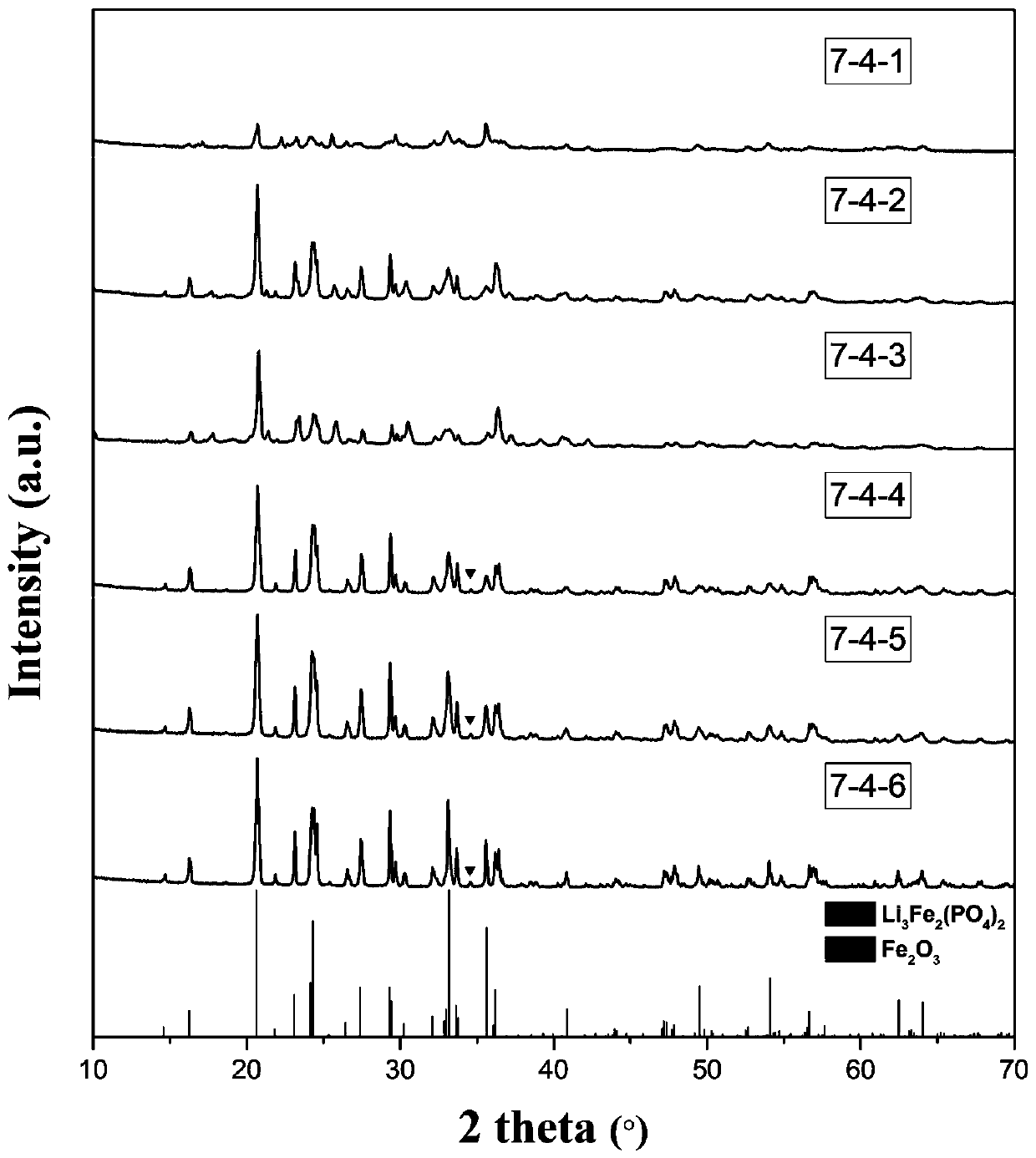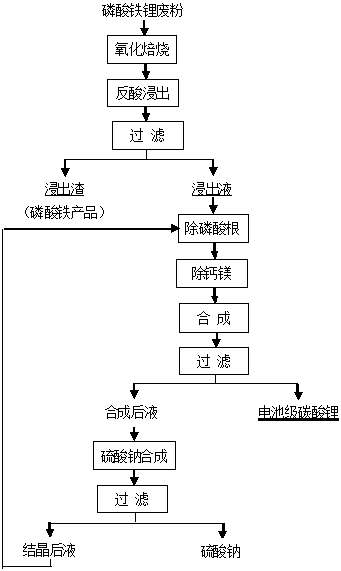A kind of comprehensive recovery method of lithium iron phosphate waste powder
A lithium iron phosphate and recovery method technology, applied in phosphorus compounds, chemical instruments and methods, alkali metal compounds, etc., can solve the problem of not achieving effective lithium recovery, and achieve low production costs, eliminate pollution, and reduce the consumption of hydrogen peroxide. Effect
- Summary
- Abstract
- Description
- Claims
- Application Information
AI Technical Summary
Problems solved by technology
Method used
Image
Examples
Embodiment 1
[0051] Step A, oxidative roasting: put 15 kg of lithium iron phosphate waste powder into a roasting furnace, and roast in the air at a temperature of 150° C. for 150 minutes to obtain activated calcined sand.
[0052] Step B, acid back leaching: the liquid-solid ratio is 2.5:1, the temperature is 90°C, the time is 5 hours, the end point pH=4.0, sulfuric acid is added dropwise, the process pH=3, and the leaching residue is obtained, and the Li in the leaching solution is + The content is 21g / L.
[0053] Step C, purification and removal of phosphate: add 1.1 times Fe of the theoretical amount of ferric phosphate precipitation in the leachate 2+ , and slowly add an oxidizing agent at a temperature of 70°C for 3 hours, add a neutralizing agent during the process, and end at pH=5.0, and filter to obtain a purified solution. Among them, the oxidizing agent preferably adopts hydrogen peroxide that does not introduce new impurities, and the neutralizer preferably adopts sodium hydrox...
Embodiment 2
[0059] Step A, oxidative roasting: put 15 kg of lithium iron phosphate waste powder into a roasting furnace, and roast under oxygen condition, T=250°C, t=90 minutes, to obtain activated calcined sand.
[0060] Step B, acid back leaching: the liquid-solid ratio (by mass ratio) of acid back leaching solution to calcined sand is 4:1, T=75°C, t=3 hours, end point pH=2.5, process pH=4, The leaching end point was filtered and separated to obtain leaching residue and leaching solution; the leaching residue was obtained, and the Li content in the leaching solution was 16 g / L.
[0061] Step C, purification and removal of phosphate: add 1.2 times Fe of the theoretical amount of ferric phosphate precipitation in the leachate 2+ , and slowly add an oxidizing agent, T=55°C, t=5 hours, add a neutralizing agent during the purification process, the final pH=3.5, and filter to obtain a purified solution.
[0062] Step D, Calcium and magnesium removal: T=60°C, t=1 hour, first use neutralizer t...
Embodiment 3
[0067] Step A, oxidative roasting: put 15 kg of lithium iron phosphate waste powder into a roasting furnace, and roast under air condition, T=180°C, t=120 minutes, to obtain activated calcined sand.
[0068] Step B, acid back leaching: the liquid-solid ratio is 3:1, T=80°C, t=4 hours, the end point pH=3.0, slowly add sulfuric acid dropwise, the process pH=3.5, filter and separate at the end point of leaching to obtain leaching residue and leaching liquid Obtain leaching slag, and Li content is 19g / L in the leaching liquid.
[0069] Step C, purification and removal of phosphate: add 1.15 times Fe of the theoretical amount of ferric phosphate precipitation in the leachate 2+ , and slowly add an oxidizing agent, T=60°C, t=4 hours, add a neutralizing agent during the process, the end point pH=4.0, and filter to obtain a purified solution.
[0070] Step D, Calcium and magnesium removal: T=55°C, t=1.5 hours, first use neutralizer to adjust pH=8, then add 4g / L soda ash, filter and s...
PUM
 Login to View More
Login to View More Abstract
Description
Claims
Application Information
 Login to View More
Login to View More - R&D
- Intellectual Property
- Life Sciences
- Materials
- Tech Scout
- Unparalleled Data Quality
- Higher Quality Content
- 60% Fewer Hallucinations
Browse by: Latest US Patents, China's latest patents, Technical Efficacy Thesaurus, Application Domain, Technology Topic, Popular Technical Reports.
© 2025 PatSnap. All rights reserved.Legal|Privacy policy|Modern Slavery Act Transparency Statement|Sitemap|About US| Contact US: help@patsnap.com



